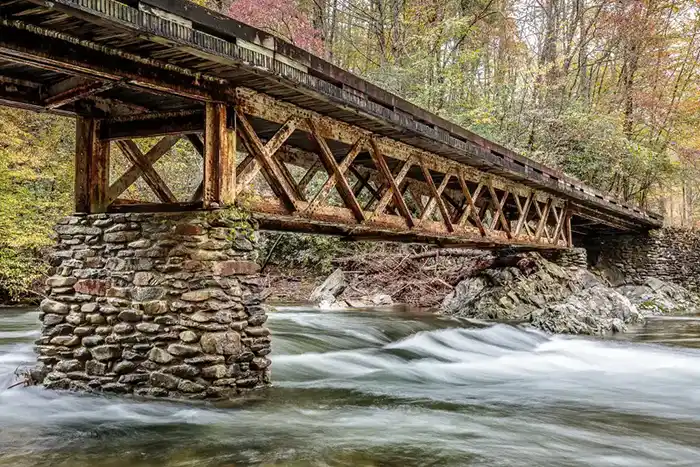The Smoky Mountains are one of, if not the, most popular National Parks in the United States. Millions of people visit the park each year, and for great reasons.
Why April Is the Perfect Time to Go
Great Smoky Mountains National Park isn’t just famous for its trees. “Wildflower National Park,” as it’s sometimes called, is prized for the breadth of its wildflower diversity: More than 1,500 species of flowering plants are found in the park, the most of any national park in North America.
Lady slipper orchids, jack-in-the-pulpit, columbine, crested dwarf iris, 10 species of trillium, bleeding heart, and violets—just to name a few—are celebrated every April at the park’s five-day “Spring Wildflower Pilgrimage.” This year’s event (April 19-23) will feature guided programs, walks, photographic tours, art classes, and more.
Why It’s Great at Other Times of Year
Each season yields its own reasons for visiting the park. In the fall, the hills thrill leaf-peepers who come by the tens of thousands to see the hillsides ablaze with autumn color; by winter, the deciduous leaves have dropped, allowing motorists to see vistas not visible at other times of the year. In summer, hikers can take to the lush forests to cool off in refreshing waterfalls and streams. And in late spring, nature puts on yet another fantastic show: the bioluminescent spectacle known as the mating ritual of the synchronous fireflies, one of the 19 species of lightning bugs in the park, and the only species capable of synchronizing their light patterns. For the duration of the firefly mating season, the park runs shuttles from the Suglarlands Visitor Center to the Elkmont viewing area. (Once the dates are announced in mid-late April, the shuttles fill up almost immediately, so check this site frequently if you’re interested.)
 So How Can You Avoid the Bugs in the Smoky Mountains?
So How Can You Avoid the Bugs in the Smoky Mountains?
The Smokey Mountains are a National Park, which means, outdoors. This would be a tip that bugs and critters can be an ever present part of your experience. But the bugs do not have to ruin your Smoky Mountain experience.
Here are some tips from us locals for enjoying this great National Park.
- Do not deodorize. You may not want to be stinky, but do not put on a bunch of perfumes or colognes. Those aromas can be attractive to a myriad of bugs. Plus, the aromas may overwhelm your sense of smell taking away some of the experience of the mountains.
- Wear longer clothes. It can be hard in the summer months with the heat, but generally, the temperatures can change radically (especially in the spring). You are best suited to wear longer sleeves and pants that can help to shield you from any stinging or biting insects. So bring a jacket, where lite pants, whatever you might have available to be ready for the elements and interested pests.
- Stay on the trails. Some spots are super beautiful and can lure you off the trail for a photo or take a glimpse at some aspect of nature. Be wary of going off the trails as taller grasses and brush can house ticks and other similar bugs. We are not saying not to go take that awesome photo, just be aware of what is likely off the trail waiting for passers-by.
- Wear some bug repellent. There are tons of options for bug repellent and everyone has their own preferences. Use something that is comfortable to wear and safe for the environment.
- Seal up any packed food. If you are packing in some food for a hike around the park make sure to have items in sealed bags. This will be one less attractant to the bugs in the area. Plus it might keep the bears from noticing you.
- Talk to the rangers. The park rangers are great resources for the most current information about park conditions. If there are spots around the park that have more heavily infested areas they will know.
This is a great time to visit the Smoky Mountains for tourists and locals. Use a few minutes before you venture out into the wild to take some precautions to ensure your experience is memorable for all the right reasons.
Avoid Bugs Visiting the Smoky Mountains This Year in Sevierville TN
Serving Sevier County and surrounding areas since 1984